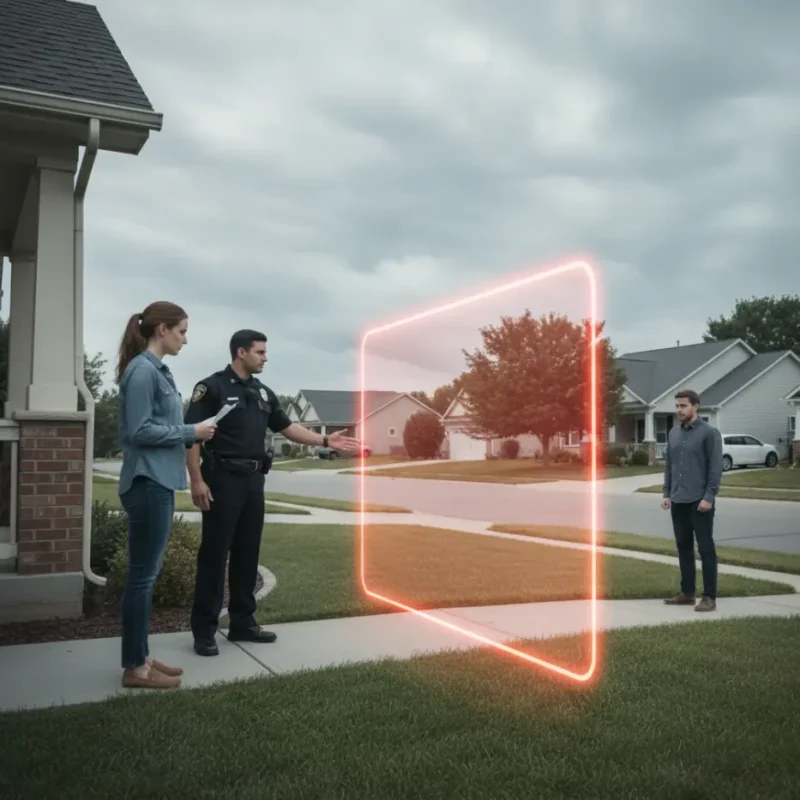How Do Restraining Orders Work?

A restraining order, also known as a protective order, is a legal tool designed to protect individuals from harassment, abuse, threats, or violence. It is a court-issued order that places restrictions on another person’s actions, such as prohibiting contact, requiring them to stay away from certain places, or preventing specific behaviors. Restraining orders are commonly used in cases of domestic violence, stalking, harassment, or workplace threats, and they serve both as a protective measure for victims and as a legal warning to potential offenders. Understanding how restraining orders work is essential for anyone facing situations of unwanted contact or personal safety concerns.
What Is a Restraining Order?
A restraining order, sometimes called a protective order, is a court-issued directive intended to protect individuals from harm or harassment. It legally restricts another person—often referred to as the respondent—from engaging in certain behaviors toward the protected individual, also known as the petitioner. These behaviors often include making contact, coming near the petitioner’s home or workplace, or committing acts of harassment, abuse, or threats.
Purpose of a Restraining Order
- Protection: The main goal is to safeguard victims from ongoing or potential harm.
- Legal Boundary: Establishes a clear, enforceable line of behavior.
- Deterrence: Serves as a legal warning to prevent further harassment, abuse, or violence.
Common Situations Where They Are Used
- Domestic Violence: Protecting a spouse, partner, or family member from physical abuse or threats.
- Stalking or Harassment: Preventing unwanted contact, including phone calls, texts, and social media messages.
- Workplace Safety: Shielding employees from threatening former coworkers or customers.
- Neighbor or Civil Disputes: Restricting hostile neighbors from harassment or trespassing.
How They Work Legally
- A restraining order is issued by a judge after reviewing evidence of harassment, abuse, or threat.
- The respondent is served with the order and legally bound to follow its terms.
- Violating the order can result in criminal charges, fines, or imprisonment.
Key Characteristics
- Civil vs. Criminal Tool: Although restraining orders are civil court orders, violating one often leads to criminal penalties.
- Immediate Relief: Courts may grant temporary orders quickly to provide immediate protection until a full hearing can be held.
- Jurisdiction Specific: The rules, requirements, and enforcement procedures vary by state or country, but the underlying principle—protection from harm—remains the same.
Example Scenario
A woman facing repeated threats from her ex-partner petitions the court for a restraining order. The judge issues a temporary order requiring the ex-partner to stay at least 500 feet away from her home and workplace. If the ex-partner violates the order, police have the authority to arrest him immediately.
Why It Matters
Restraining orders give victims a legal shield against harassment or abuse, providing both peace of mind and a practical enforcement tool through the justice system.
Different Types of Restraining Orders
Restraining orders are not a one-size-fits-all solution. Courts issue different types depending on the circumstances, urgency, and relationship between the petitioner (the person seeking protection) and the respondent (the person being restrained). Understanding these types helps individuals pursue the right form of legal protection for their situation.
1. Emergency Protective Orders (EPOs)
- Issued Quickly: Often granted by a judge or magistrate in urgent situations, sometimes at the request of law enforcement.
- Duration: Typically lasts a few days (24 hours to 7 days), providing immediate protection until a hearing can be scheduled.
- Use Case: Domestic violence incidents where police intervene and need to protect victims immediately.
2. Temporary Restraining Orders (TROs)
- Short-Term Relief: Designed to provide protection while the court considers a permanent order.
- Duration: Usually 2–4 weeks, depending on the jurisdiction.
- Scope: Can restrict contact, enforce distance requirements, and sometimes grant temporary custody of children.
- Example: A stalking victim obtains a TRO requiring the harasser to stop all communication until the court hearing.
3. Permanent Restraining Orders
- Long-Term Protection: Issued after a full court hearing where both parties present evidence.
- Duration: Can last months, years, or even indefinitely depending on the case and jurisdiction.
- Stronger Enforcement: May include broader restrictions and detailed provisions for custody or property use.
4. Domestic Violence Restraining Orders (DVROs)
- Scope: Specifically designed for situations involving intimate partners or family members.
- Provisions: May include no-contact rules, stay-away orders, and temporary custody or support arrangements.
5. Civil Harassment Restraining Orders
- Scope: Used for non-family relationships, such as neighbors, roommates, or acquaintances.
- Example: A person seeks protection against a former friend who continually threatens them.
6. Workplace Violence Restraining Orders
- Filed by Employers: Designed to protect employees from threats or harassment at work.
- Example: A company obtains a restraining order against a former employee making violent threats toward staff.
Comparison Table
| Type of Order | Duration | Who Can Request | Common Use Case |
|---|---|---|---|
| Emergency Protective Order | 1–7 days | Police/Judge | Immediate danger, domestic violence |
| Temporary Restraining Order | 2–4 weeks | Victim | Until a full hearing is held |
| Permanent Restraining Order | Months to years | Victim | Long-term protection after hearing |
| Domestic Violence RO | Varies | Family/partner | Intimate partner or family abuse |
| Civil Harassment RO | Varies | Individual | Non-family threats/harassment |
| Workplace Violence RO | Varies | Employer | Threats in professional environments |
Why This Matters
Knowing the types of restraining orders available ensures victims request the right protection for their situation, whether immediate safety, long-term security, or workplace concerns.
Who Can Request a Restraining Order?
Restraining orders are designed to be accessible to those who genuinely need protection, but eligibility depends on the relationship between the parties, the type of harm involved, and the laws of the jurisdiction. Generally, anyone who faces harassment, threats, abuse, or stalking may request one, but the legal framework specifies who qualifies.
1. Victims of Domestic Violence
- Eligibility: Spouses, ex-spouses, current or former partners, family members, or cohabitants.
- Examples of Abuse: Physical assault, threats of violence, intimidation, or controlling behaviors.
- Why They Qualify: Domestic violence restraining orders (DVROs) exist specifically to protect people in close personal relationships.
2. Individuals Facing Harassment or Stalking
- Eligibility: Anyone subjected to repeated harassment, threats, or unwanted following, even without a family or romantic relationship.
- Examples: Neighbors, acquaintances, or strangers engaging in harassment.
- Order Type: Typically a civil harassment restraining order.
3. Employees or Employers
- Eligibility: Workers threatened by colleagues, customers, or outsiders; employers seeking to protect their staff.
- Examples: A disgruntled former employee making violent threats, or a customer harassing staff.
- Order Type: Workplace violence restraining order, often filed by the employer on behalf of employees.
4. Students or Minors
- Eligibility: Students experiencing harassment, bullying, or abuse may seek restraining orders, often with the help of parents or guardians.
- Examples: A teenager stalked by an older acquaintance or harassed online by peers.
- Court Consideration: Courts often expedite such cases due to the vulnerability of minors.
5. Vulnerable Adults
- Eligibility: Elderly individuals or those with disabilities who are being abused, neglected, or exploited.
- Examples: Financial exploitation by a caregiver, or physical abuse by a family member.
- Order Type: Sometimes referred to as elder abuse restraining orders.
Who Cannot Request a Restraining Order?
- People who merely dislike or disagree with someone but cannot prove threats, harassment, or abuse.
- Situations involving normal conflicts without evidence of danger or distress.
Example Scenario
A woman repeatedly harassed by her former boyfriend seeks a domestic violence restraining order. At the same time, a small business owner applies for a workplace violence order to protect employees from a threatening ex-worker. Both individuals qualify, but under different categories.
Key Insight
Restraining orders are not limited to victims of domestic violence. Anyone facing legitimate threats or harassment—whether at home, school, or work—may be eligible to request one, provided they meet their jurisdiction’s legal requirements.
How to File for a Restraining Order
Filing for a restraining order is often an intimidating process, especially for individuals already under stress from harassment, abuse, or threats. However, courts generally make the procedure as accessible as possible to ensure that victims can obtain protection quickly. While the exact steps vary by jurisdiction, the process typically follows a similar structure.
Step 1: Determine Eligibility
- Confirm that your situation qualifies under the law (domestic violence, stalking, harassment, workplace threats, etc.).
- Identify which type of restraining order best fits your case (temporary, permanent, workplace, civil harassment).
Step 2: Complete the Required Forms
- Courts usually provide forms that outline the petitioner’s reasons for seeking protection.
- These forms require:
- Details of the harassment or abuse.
- Evidence such as text messages, emails, photos, or witness statements.
- Information about the relationship between petitioner and respondent.
Step 3: File the Petition with the Court
- Submit the forms to the court clerk in the appropriate jurisdiction (family court, civil court, or criminal court, depending on the case).
- Filing fees may apply, though many jurisdictions waive them in domestic violence cases.
Step 4: Temporary Restraining Order (TRO) Request
- In urgent cases, judges may issue a temporary restraining order immediately to provide short-term protection until a hearing can be held.
- These orders typically last 2–4 weeks.
Step 5: Service of Process
- The respondent must be formally notified of the restraining order request.
- This is usually done by law enforcement or a professional process server.
- Proper service is critical—without it, the court cannot proceed to a full hearing.
Step 6: Court Hearing
- Both petitioner and respondent present evidence before a judge.
- The judge considers the seriousness of the threats, the credibility of evidence, and the petitioner’s safety.
- If the judge is convinced, a long-term or permanent restraining order may be granted.
Step 7: Enforcement
- Once issued, the restraining order is entered into law enforcement databases.
- Police officers can act immediately if the order is violated.
Example Scenario
A victim of stalking collects evidence of repeated threatening texts and submits them with a restraining order petition. The judge issues a TRO the same day, ensuring immediate protection, and schedules a hearing. After reviewing evidence at the hearing, the court grants a one-year restraining order with stay-away provisions.
Key Insight
Filing for a restraining order requires careful preparation and evidence, but courts generally prioritize victim safety, often issuing temporary protection right away.
Temporary vs. Permanent Restraining Orders
Restraining orders are generally issued in two main stages: temporary and permanent. Each serves a specific role in protecting victims, with the temporary order offering immediate relief and the permanent order providing longer-term protection. Understanding the differences between the two helps clarify what to expect during the legal process.
Temporary Restraining Orders (TROs)
- Purpose: Provide urgent, short-term protection until a full court hearing can be held.
- How They Are Granted:
- Usually issued based on the petitioner’s sworn statement without requiring the respondent to be present.
- Courts often err on the side of safety, granting TROs quickly when immediate danger is alleged.
- Duration: Typically lasts 2–4 weeks, but varies by jurisdiction.
- Scope of Protection:
- No-contact requirements (phone, text, email, in-person).
- Stay-away orders (distance restrictions from home, school, or workplace).
- In domestic cases, may include temporary custody or housing provisions.
Permanent Restraining Orders
- Purpose: Provide ongoing protection after both parties have had the chance to present evidence in court.
- How They Are Granted:
- Issued after a formal hearing where the judge considers testimony, evidence, and witness statements.
- The respondent has the right to defend themselves, ensuring due process.
- Duration: Can last months, years, or indefinitely, depending on the severity of the case and state law.
- Scope of Protection: Often more detailed than a TRO, including long-term custody arrangements, financial support orders, or permanent no-contact provisions.
Key Differences Between TROs and Permanent Orders
| Factor | Temporary Restraining Order (TRO) | Permanent Restraining Order |
|---|---|---|
| When Issued | Immediately, often without hearing | After full court hearing |
| Duration | Short-term (2–4 weeks) | Long-term (months, years, or indefinite) |
| Respondent Present? | No | Yes, both parties present evidence |
| Scope | Basic, urgent protections | Comprehensive, detailed protections |
Example Scenario
- A woman experiencing harassment from a former partner requests a TRO. The court grants immediate protection, preventing the partner from contacting her. At the hearing two weeks later, both sides present evidence. The judge issues a permanent order valid for three years, with strict stay-away provisions.
Key Insight
Temporary restraining orders are quick and accessible for immediate safety, while permanent restraining orders are thorough and lasting, providing long-term protection once the court fully reviews the case.
What Restrictions Can a Restraining Order Include?
A restraining order is not a one-size-fits-all document. Depending on the situation and the type of order, courts can impose a variety of restrictions designed to protect the petitioner from harm. These restrictions aim to stop harassment, prevent physical harm, and limit contact between the parties.
Common Restrictions in Restraining Orders
- No Contact Provisions
- The respondent is prohibited from contacting the petitioner by phone, text, email, social media, or in person.
- This includes indirect contact, such as sending messages through friends or family members.
- Stay-Away Requirements
- The order may require the respondent to stay a certain distance (e.g., 100–500 feet) away from the petitioner’s home, workplace, school, or other specified places.
- Some orders can cover additional locations like daycare centers or places of worship.
- Prohibition on Harassment or Abuse
- The respondent must refrain from any form of harassment, threats, intimidation, or physical violence.
- This also extends to electronic harassment, including social media posts or online stalking.
- Custody and Visitation Limits
- In domestic violence cases, the order may temporarily assign custody of children to the petitioner.
- Visitation by the respondent may be restricted, supervised, or suspended depending on safety concerns.
- Firearm Restrictions
- Many jurisdictions require respondents to surrender firearms while a restraining order is active.
- Possession of weapons while under an order can lead to serious criminal penalties.
- Financial or Property Provisions
- Courts can order the respondent to continue paying bills, support, or housing expenses.
- They may also prevent the respondent from selling, transferring, or damaging shared property.
How Courts Decide Restrictions
- Nature of the Threat: Serious threats of violence may trigger stricter no-contact and firearm restrictions.
- Relationship Between Parties: Domestic violence cases often involve custody and financial considerations, while civil harassment orders may focus mainly on distance requirements.
- Evidence Provided: Stronger evidence (e.g., police reports, medical records, threatening messages) usually leads to broader protections.
Example Scenario
A stalking victim obtains a restraining order that prohibits the stalker from contacting them in any way, requires the stalker to stay 300 feet away from their home and office, and forces them to surrender all firearms.
Key Insight
Restraining orders are customizable tools. Judges tailor restrictions to fit the petitioner’s specific needs, balancing safety, fairness, and enforceability under the law.
Enforcement and Violations of Restraining Orders
A restraining order is only effective if it can be enforced, and courts take violations very seriously. Once issued, restraining orders become legally binding documents, meaning that the respondent must comply with every condition outlined in the order. Enforcement mechanisms ensure that victims are protected and that violators face swift consequences.
How Restraining Orders Are Enforced
- Law Enforcement Involvement
- Once an order is granted, it is entered into law enforcement databases.
- Police officers have immediate authority to intervene when a violation is reported.
- Victims are encouraged to keep a copy of the order with them at all times to show authorities if needed.
- Clear Boundaries for Respondents
- The restraining order specifies exactly what the respondent can and cannot do.
- Ambiguity is avoided to make enforcement easier (e.g., “no contact in any form” rather than vague restrictions).
- Mandatory Arrest Policies
- In many jurisdictions, police must arrest a respondent if they violate a restraining order.
- This ensures quick action to prevent further harm.
- Court Oversight
- Judges may require periodic check-ins or compliance hearings.
- Violations may lead to stricter restrictions or extension of the order.
What Constitutes a Violation?
- Direct Contact: Calling, texting, emailing, or physically approaching the protected person.
- Indirect Contact: Sending messages through mutual friends, relatives, or social media.
- Proximity Violations: Being within restricted distances of homes, workplaces, or schools.
- Failure to Surrender Weapons: If firearms must be relinquished but are not, it counts as a violation.
- Property Interference: Damaging or attempting to access property protected by the order.
Consequences of Violations
- Criminal Charges: Violations can lead to misdemeanor or felony charges, depending on severity.
- Fines and Jail Time: Penalties range from fines and probation to extended imprisonment.
- Extension of Order: Courts often extend the restraining order if violations occur, sometimes making it indefinite.
- Loss of Privileges: Violations may result in revoked visitation rights, firearm bans, or other restrictions.
Example Scenario
A man under a restraining order is prohibited from contacting his ex-partner. Despite this, he sends repeated text messages. When reported, the police arrest him immediately for violating the order, leading to criminal charges and an extension of the protective order.
Key Insight
Restraining orders are only as strong as their enforcement. The legal system provides multiple layers of protection, but victims must remain vigilant in reporting violations to ensure continued safety.
Legal Consequences for Breaking a Restraining Order
Violating a restraining order is a serious offense with potentially severe consequences. Because restraining orders are legally binding, courts and law enforcement treat violations as acts of contempt against the judicial system. The penalties vary by jurisdiction and by the severity of the violation, but they are always designed to protect the victim and discourage further misconduct.
Criminal Charges
- Misdemeanor Offense:
- First-time violations are often charged as misdemeanors.
- Penalties may include fines, probation, community service, or short jail sentences (often up to one year).
- Felony Offense:
- Repeat violations, violent actions, or stalking-related breaches may escalate to felony charges.
- Felony convictions can lead to prison terms of several years.
Court-Imposed Penalties
- Fines: Monetary penalties can range from hundreds to thousands of dollars.
- Probation: Offenders may be placed on supervised probation with strict reporting requirements.
- Incarceration: Jail or prison time is a common consequence, especially for repeated or violent violations.
- Extension of the Order: Judges may extend restraining orders or make them permanent when violations occur.
Collateral Consequences
- Loss of Firearm Rights: Federal and state laws often prohibit firearm possession for individuals under restraining orders or those who violate them.
- Employment Impact: Criminal records can limit job opportunities, particularly in fields requiring background checks.
- Immigration Consequences: For non-citizens, violations may affect visa status, green card eligibility, or result in deportation.
- Custody and Visitation: Family courts may restrict or revoke visitation rights for parents who violate restraining orders.
Aggravating Factors
Courts consider certain factors when determining penalties:
- Violence or Threats: Was the violation accompanied by physical harm or credible threats?
- Repeat Offenses: Multiple violations increase penalties and likelihood of felony charges.
- Vulnerability of Victim: Harassment of minors, elderly individuals, or disabled persons often triggers harsher sentencing.
Example Scenario
A man subject to a restraining order is required to stay 500 feet away from his ex-partner’s home. He repeatedly shows up at the residence and is arrested twice. The first arrest results in a misdemeanor charge and probation, but the second violation escalates to a felony, leading to a two-year prison sentence.
Key Insight
Breaking a restraining order carries serious legal risks, from fines and jail time to long-term consequences like loss of rights and reputational damage. Courts treat these violations as a direct attack on both the victim’s safety and the authority of the legal system.
How Long Does a Restraining Order Last?
The duration of a restraining order depends on the type of order, the severity of the case, and the laws of the jurisdiction. While some restraining orders are temporary and only last a few days, others can remain in effect for years—or even indefinitely—if the court deems it necessary for the petitioner’s safety.
Temporary Restraining Orders (TROs)
- Duration: Generally last 2–4 weeks until a full court hearing is scheduled.
- Purpose: Provide immediate protection for victims in urgent situations.
- Extension: If the court hearing is delayed, the TRO may be extended until the case is reviewed.
Permanent Restraining Orders
- Duration: Can last months, years, or indefinitely, depending on state law.
- Court Decision: Issued only after a formal hearing where both parties present evidence.
- Extensions: Many courts allow victims to request extensions before the order expires, often for another set period (e.g., 1–5 years).
Domestic Violence Restraining Orders
- In some states, domestic violence orders can last up to 5 years and may be renewed.
- Courts often take domestic violence cases more seriously due to repeated risk, granting longer terms or indefinite extensions.
Civil Harassment or Workplace Orders
- These may last from 1 to 3 years, with the possibility of renewal.
- Courts often consider whether the harassment is likely to continue before granting extensions.
Indefinite or Lifetime Orders
- In severe cases—such as violent stalking, repeated harassment, or threats to life—courts may grant restraining orders with no expiration date.
- The respondent may sometimes petition the court years later to lift or modify the order, but the burden of proof is high.
Example Scenario
A woman obtains a temporary restraining order against her abusive ex-partner, which lasts 30 days. At the hearing, the judge issues a permanent restraining order valid for 3 years. Before expiration, she petitions the court to extend it, and the judge grants another 5 years of protection.
Key Insight
Restraining orders range from short-term emergency protection to long-term or lifetime safeguards. Courts evaluate the risk level and the petitioner’s ongoing need for safety to determine how long the order remains in place.
Frequently Asked Questions (FAQs)
1. What exactly does a restraining order do?
A restraining order prohibits the respondent from specific actions such as contacting, harassing, or approaching the petitioner. It sets legally enforceable boundaries for protection.
2. How quickly can I get a restraining order?
In urgent cases, courts may issue an emergency or temporary restraining order within hours or days. Permanent orders require a full court hearing.
3. Do I need a lawyer to file for a restraining order?
Not necessarily. Many courts provide self-help forms, and victims’ advocacy groups often assist. However, an attorney can help strengthen the case with proper documentation and evidence.
4. Can a restraining order include children?
Yes. In domestic violence cases, restraining orders often extend to children, granting temporary custody or restricting the respondent’s access.
5. Is a restraining order valid everywhere in the U.S.?
Yes. Under the Violence Against Women Act (VAWA), restraining orders are recognized and enforceable across state lines.
6. Can restraining orders be dropped or modified?
Yes. Either party can request changes. The petitioner may ask to drop the order, or the respondent may seek modifications. Only the court can approve these changes.
7. What happens if the respondent violates the order?
Violations can result in immediate arrest, criminal charges, fines, probation, or jail time depending on severity.
8. Will the respondent know I filed for a restraining order?
Yes. The respondent must be formally served with the order to make it legally enforceable.
9. How long does it take for a restraining order hearing?
Hearings are usually scheduled within a few weeks after filing, but emergency orders can provide protection until the court date.
10. Can restraining orders be permanent?
Yes. In severe cases involving ongoing danger, courts may grant restraining orders with no expiration date.






